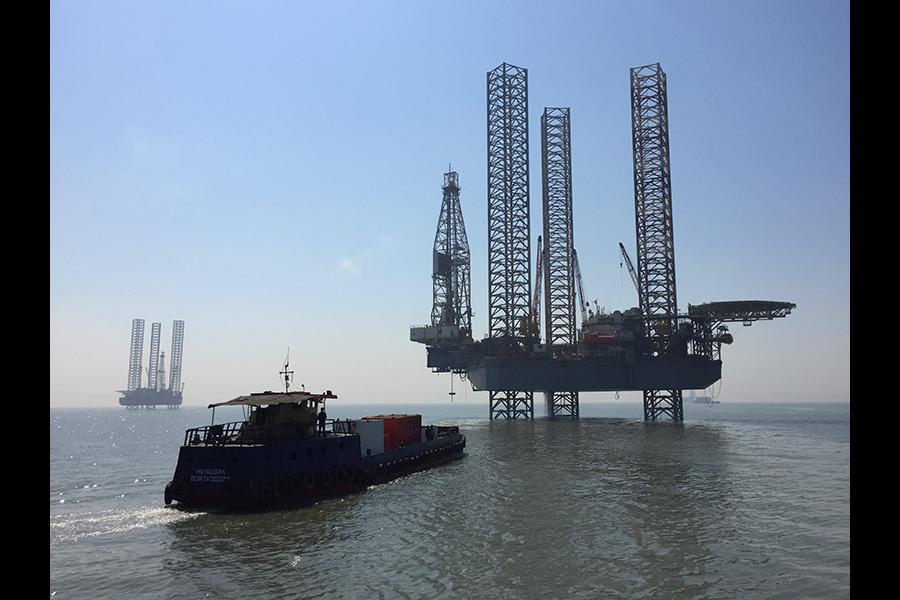Making small, big...
On 25 May 2016 the Government of India launched the Discovered Small Fields (DSF) round. On offer are 46 Contract Areas comprising of 67 oil and gas fields distributed across 9 sedimentary basins across India. Out of the 46 Contract Areas 26 are onland, 18 are in shallow water and 2 in deepwater offshore.
In these times of ‘lower-for-longer’ crude price scenario it will be interesting to see how domestic and more importantly global E&P investors respond to the government’s call for bids. Equally interesting would be to see how will the existing license holders of these fields i.e. the NOCs respond.
Investment decisions depend on the risk-return perception. In E&P risks are categorized as ‘below-the-ground’ and ‘above-the-ground risks’. The former relates to the likelihood of finding hydrocarbons while the latter relates to the geo-political, policy, operational risks. Since these are discovered fields, albeit small, therefore sufficient data including well data is available for companies to assess the technical merit of each field. These fields although hydrocarbon bearing were not monetized by the NOCs owing to reasons such as economics (small size, high overhead costs), technology, unfavourable fiscal regime etc. Therefore, the ‘below-the-ground’ risk is low.
The government has designed the new DSF policy on the principle of ‘ease of doing business’. With the new policy it has addressed the key issues which the E&P sector in India is currently facing. Revenue sharing instead of production sharing, single licence for all hydrocarbons, pricing freedom for both oil and gas, and benign fiscal terms are some of the key measures which result in lowering the ‘above-the-ground’ risks as well. With both the above-the-ground and below-the-ground risks being low the government expects the bid round to be successful. Perhaps a repeat of the famous Mangala field development by Cairn Energy which was awarded in the earlier discovered fields round.
The bids have been invited under International Competitive Bidding with no carried interest of NOCs as was the case in the earlier discovered field rounds. Oil cess has also been done away with. There is no technical capability requirement since the government wants to encourage ‘start-ups’ to enter into E&P. Evaluation for award of license will be based on two biddable components viz. work programme which includes number of development/appraisal wells (20% weightage) and the government’s share of revenue (80% weightage). Once announced as winners companies have to approach NOCs for transfer of the Petroleum Mining Lease (PML) or Petroleum Exploration License (PEL).
Once awarded the first PML/PEL companies are expected to undertake drilling of committed wells and commence commercial production within 3, 4 and 6 years for onland, shallow offshore and deepwater offshore areas respectively failing which the contract areas will stand relinquished. While the onland fields are spread across 8 sedimentary basins across India shallow water offshore fields are concentrated in the Mumbai Offshore on the west coast and the deepwater fields are in the east coast Krishna-Godavari basin.
Investors have welcomed the policy changes announced by the government in the DSF rounds which are seen as a precursor to the upcoming Hydrocarbon Exploration Licensing Policy (HELP) which has a similar policy contour including the simple to administer revenue sharing contract. They have some areas of concern as well such as the one-time payment to NOCs of the book value of wells and facilities which will be handed over to the successful bidders. Other challenges include small size of some fields. 32% of the fields on offer are less than 10 square km and 47% of the fields are less than 20 square km. Offshore fields require high development capex commitments where only the large companies would be interested. Transfer of PML/PELs could be a challenge as well especially where multiple fields are under a single contract area. Last but not the least, bringing the hydrocarbon molecules to the market could be a challenge in some areas.
Notwithstanding the challenges, we believe that the government has sent a very strong message to the investor community. Not just below-the-ground risks but even the above-the-ground risks have been addressed by the government through benign contractual and fiscal terms for investors. In short, the upcoming DSF round is an interesting opportunity for investors–domestic and foreign–to establish or re-inforce their India E&P ambitions. The ball is now in the investor’s court!
- By Deepak Mahurkar, Leader – Oil & Gas, PwC India and Gaurav Semwal, Associate Director – Oil & Gas , PwC India
The thoughts and opinions shared here are of the author.
Check out our end of season subscription discounts with a Moneycontrol pro subscription absolutely free. Use code EOSO2021. Click here for details.
